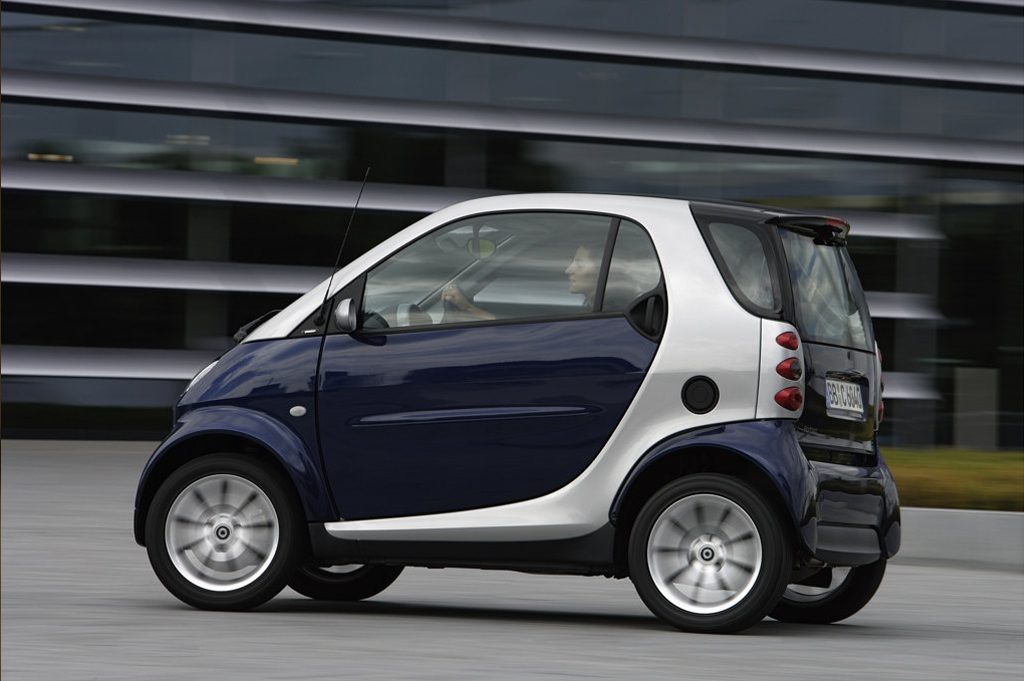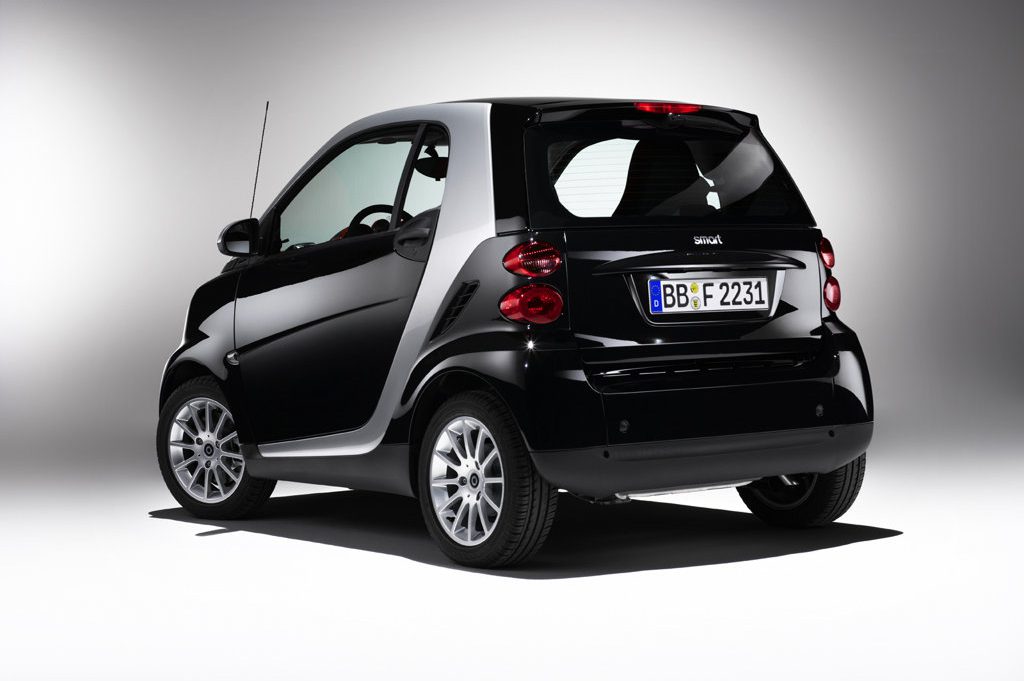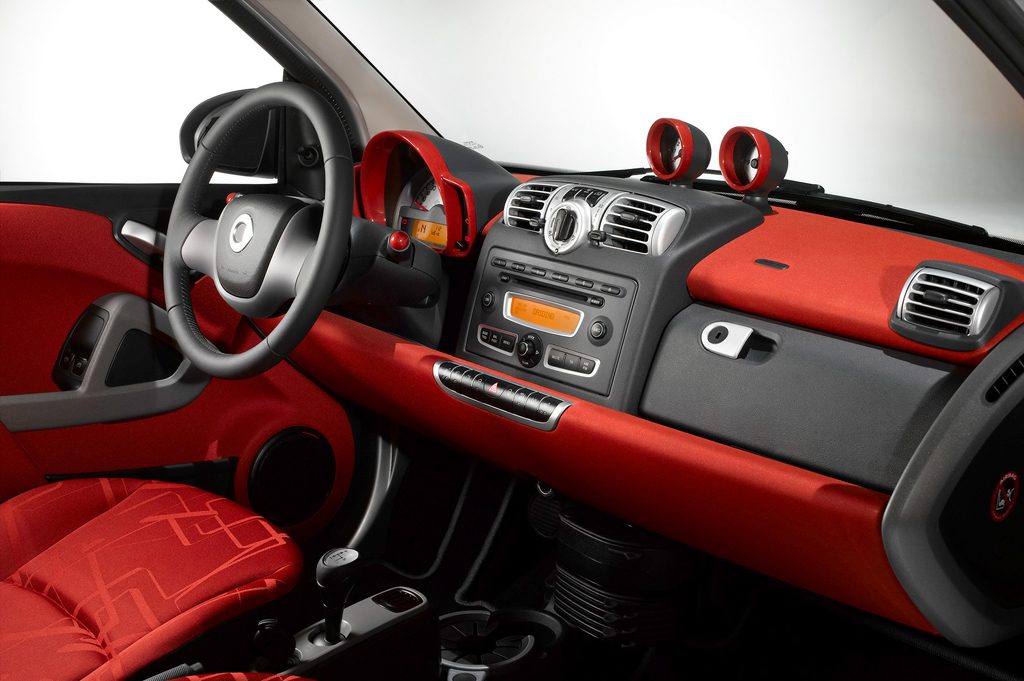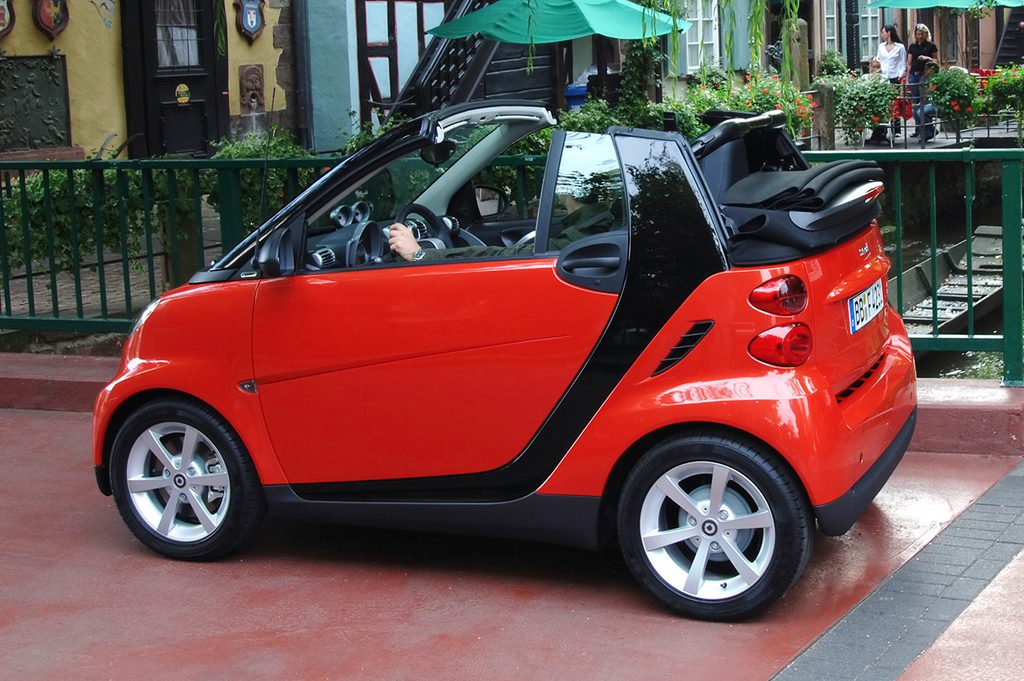| Subcompact car; Built in France |
|
|
| Good condition price range: $2,600 – $12,500* |

2009 Smart ForTwo Front

2009 Smart ForTwo Rear

2009 Smart ForTwo Interior

2009 Smart ForTwo Profile
| Pros: |
|
| Cons: |
|
The Smart ForTwo is a radical design statement that favors minuscule exterior dimensions, tight-quarters maneuverability, and fuel efficiency over pleasant road manners and passenger/cargo space. ForTwo offers unparalleled dexterity in congested urban commuting. Comprehensive safety equipment and solid construction should ease most buyers’ concerns about occupant protection. However, its relatively high price (both new and used), coupled with very limited versatility, will likely limit ForTwo’s appeal for many shoppers.
Overview
Nothing on American roads comes close to resembling the Smart ForTwo, which debuted for 2008 as the smallest and shortest car in the U.S. mass market. The ForTwo was an ultra-compact rear-engine, rear-wheel-drive two-seater designed and built by the Smart company, a division of Daimler/Mercedes-Benz. ForTwos had been on sale in Europe and other foreign markets since 1998, but 2008 marked the car’s U.S. debut. Smart partnered with U.S. dealership network Penske Automotive Group, Inc. to form Smart USA. That new company planned to sell the ForTwo in approximately 70 select Mercedes-Benz and stand-alone dealerships across the country.
Two-door coupe and Cabriolet (convertible) body styles were offered, powered by a tiny 70-horsepower 1.0-liter three-cylinder engine mounted beneath the rear hatch. The sole transmission was a five-speed automated manual that had no clutch pedal and could be set to shift like an automatic.
Side airbags with head and torso protection, antilock brakes, traction control, and an antiskid system were standard on all models. Coupes in base-level Pure trim came standard with manual windows and mirrors, and a fold-flat passenger seat. Uplevel Passion coupes added air conditioning, a panoramic fixed sunroof, alloy wheels, and power windows and mirrors. Cabriolets came only in Passion trim, and included a power soft top with a heated glass rear window. Stand-alone options for all models included power steering, heated seats, and an alarm system. Note that some ForTwos may lack power steering, which could affect handling ease. Possible rivals included the Honda Fit, Hyundai Accent, and Suzuki SX4, but all of those cars had back seats.
Yearly Updates
| 2009 ForTwo The Smart car was largely unchanged for the 2009 model year except for a new BRABUS edition of both the coupe and convertible. Those new models had a sport suspension, leather upholstery, and heated seats. |
| 2010 ForTwo The 2010 Smart ForTwo was largely unchanged. |
| 2011 ForTwo The 2011 Smart ForTwo added pure electric versions–Electric Drive 2-door coupe and Electric Drive Cabriolet 2-door convertible–while gas-powered models were largely unchanged. The Electri Drive models were only available for lease in select markets. |
| 2012 ForTwo Slight interior and exterior styling alterations marked the 2012 edition of the Smart ForTwo. |
| 2013 ForTwo The 2013 ForTwo received a cosmetic freshening with a larger grille, revised bumpers, horizontal LED daytime running lights, and new wheel and upholstery designs. In addition, coupes added curtain-side airbags as standard equipment. But the big news is first-time retail availability of an all-electric Smart. That model, the Smart Electric Drive (ED), is covered in a separate report. |
| 2014 ForTwo There were no major changes for the 2014 Smart ForTwo. |
